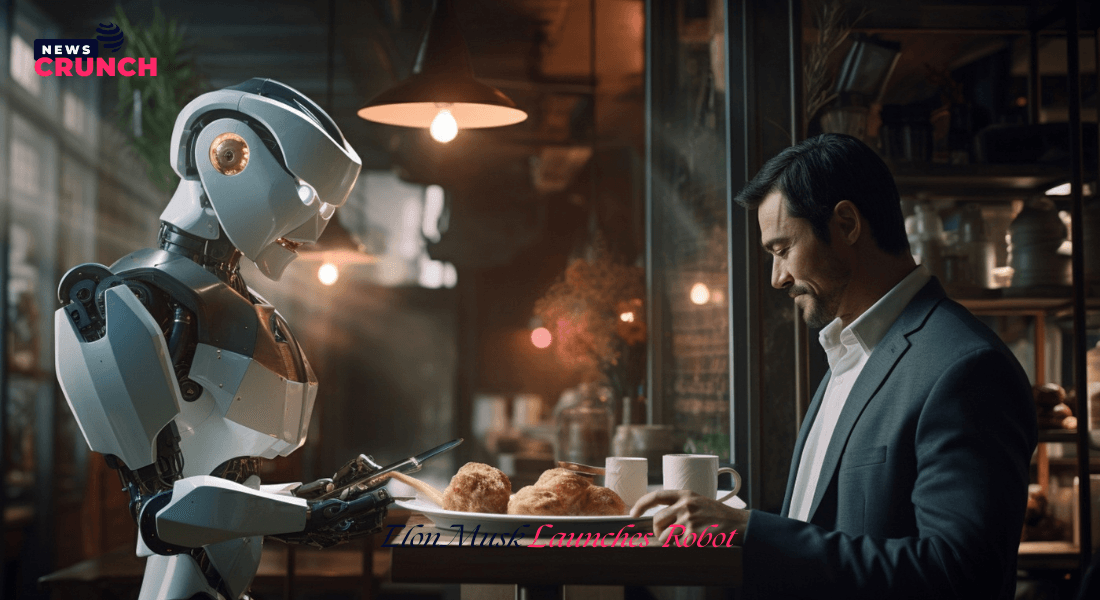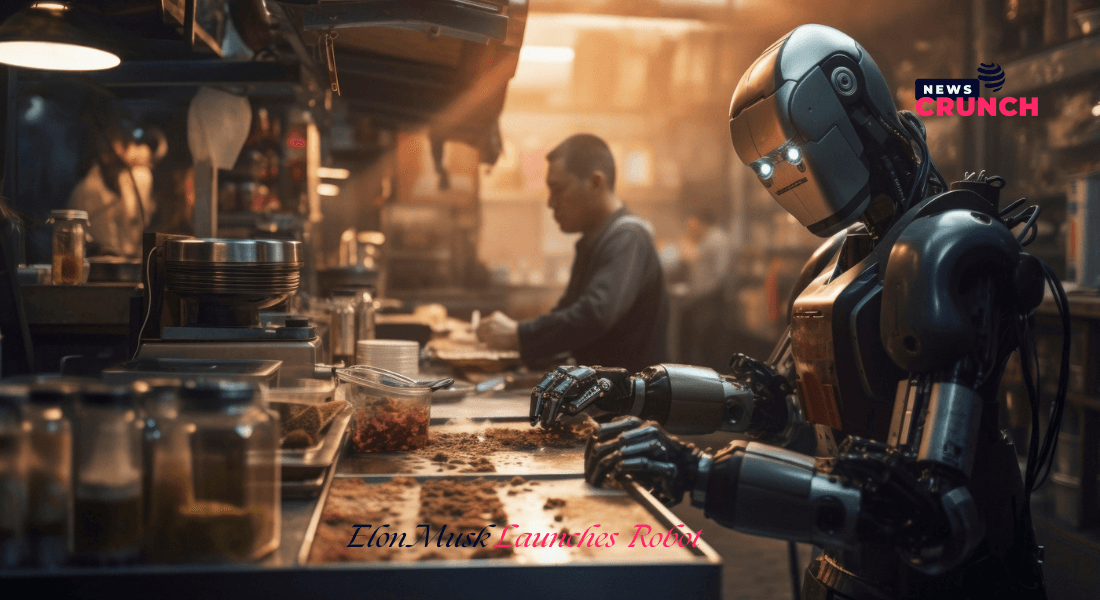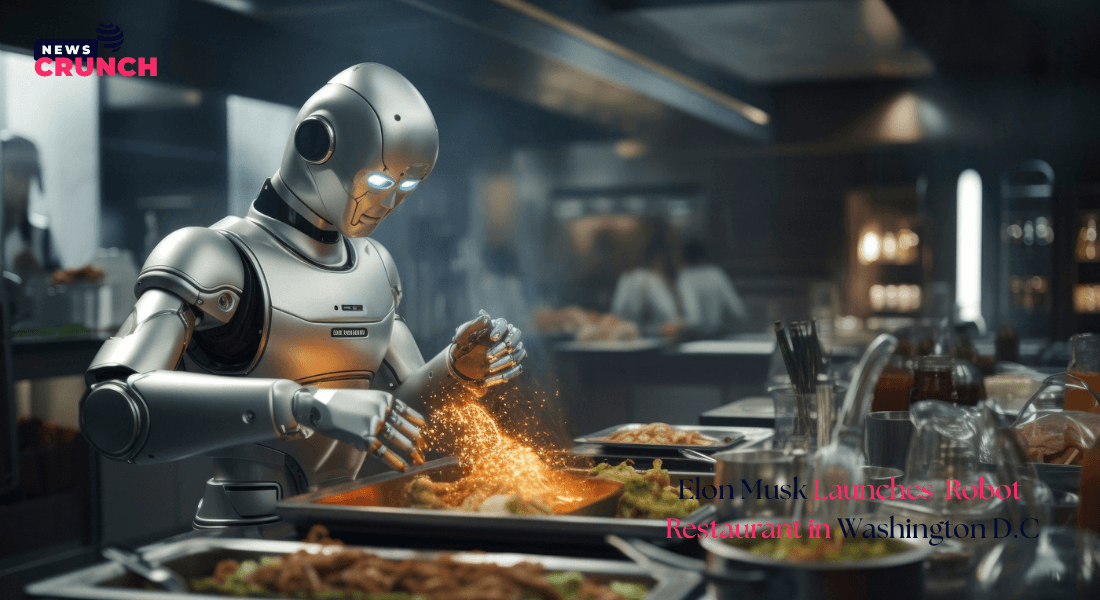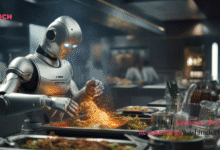A Bold Step Into the Future of Dining
Elon Musk has always been known for pushing the boundaries of innovation, whether it’s through Tesla’s electric cars, SpaceX rockets, or Neuralink’s brain-interface technology. Now, he has leapt into an industry few expected in hospitality. Launching a 100% robot-run restaurant in Washington, D.C. is being called one of Musk’s boldest moves yet. For decades, the idea of robot restaurants has lived more in science fiction than reality. A handful of experimental cafés in Asia introduced robots as waiters, but none have operated at the scale or sophistication Musk is attempting. His vision is not just about convenience; it’s about creating a dining experience where technology entirely replaces humans.
The restaurant symbolises the future of dining with robots, where automation and AI could redefine the way we eat out. Customers will no longer interact with servers or chefs but with intelligent machines programmed for speed, accuracy, and consistency. This raises both excitement and unease. The prospect of experiencing a truly futuristic service will pique many diners’ interest. On the other hand, critics wonder: Is this progress, or the beginning of the end for hospitality jobs? Musk’s experiment will put those questions to the test in real time.
How the 100% Robot-Run Restaurant Works
The heart of Musk’s robotic restaurant lies in automation technology. From the moment a customer steps inside, every detail of their dining journey is handled by robots. Orders are placed using sleek AI-powered kiosks or a smartphone app connected to the restaurant system. Once placed, the order is transmitted to robot chefs, who prepare dishes with machine precision, ensuring consistency in taste and presentation. Instead of human servers, robotic waitstaff navigate the floor, delivering meals directly to tables. These robots use advanced sensors, LiDAR technology, and machine learning algorithms to avoid collisions, maintain smooth service, and adjust routes depending on crowd movement. Automated arms pour drinks, while robotic assistants handle table clearing, dishwashing, and sanitation.

The integration of AI in the food service industry ensures personalisation, too. For example, regular customers may have their favorite meals remembered and suggested automatically. With every visit, the system becomes smarter, enhancing speed and customisation. The entire setup is designed to be seamless and futuristic, offering a no-human-server restaurant experience. It’s not just about novelty; it’s a real-time demonstration of how robotics can handle high-pressure hospitality environments with efficiency unmatched by humans.
Washington, D.C., Chosen as the Launchpad
Choosing Washington, D.C., as the launch site for the world’s first robot-run restaurant was no accident. The U.S. capital is a political hub and a cultural and technological melting pot. By situating the restaurant in D.C., Musk ensures visibility among policymakers, tech leaders, and the general public. Washington, D.C., is known for its diverse food culture, attracting millions of visitors annually. Launching here allows Musk to test how locals and international tourists will receive a smart dining experience. The city’s younger, tech-savvy population also makes it an ideal testing ground for futuristic innovations.
From a strategic perspective, placing the restaurant close to lawmakers could spark conversations about the impact of automation on jobs and potential regulatory frameworks. With the rapid growth of artificial intelligence, D.C. is the perfect stage for Musk to showcase his latest disruption. By launching the robot restaurant in Washington D.C., Musk is making a statement: the future of automation is not just in factories or cars, it’s coming to everyday life. And what better place to highlight that than in the city where future-shaping policies are debated?
The Technology Behind Musk’s Robotic Waitstaff
At the core of Musk’s restaurant lies cutting-edge restaurant automation technology—a mix of artificial intelligence, robotics engineering, and real-time data analytics that powers each robot. Unlike traditional machines, these robots are designed to interact with humans in a fluid, almost natural way. The robot chefs are equipped with high-precision mechanical arms that replicate the movements of trained culinary experts. These arms can chop, sauté, and plate dishes quickly and accurately, ensuring uniformity. The system is supported by sensors and cameras that monitor freshness, temperature, and quality.
On the service side, robotic waitstaff use AI navigation systems similar to autonomous vehicles. With LiDAR, ultrasonic sensors, and machine vision, they smoothly move across crowded floors, avoiding obstacles while delivering meals on time. They’re even programmed with polite voice prompts to communicate with customers. Musk’s focus on AI in the food service industry extends beyond efficiency. The robots are connected to a central system that collects feedback in real-time. If a dish is delayed or a customer has an issue, the system can auto-correct without human intervention. This blend of robotics and artificial intelligence creates a service ecosystem that feels futuristic yet practical, demonstrating how automation can elevate everyday dining.
Impact on Human Jobs in the Restaurant Industry
One of the most debated aspects of Musk’s 100% robot-run restaurant is its effect on employment. The food service industry employs millions worldwide, many relying on waiting tables, cooking, or cleaning for their livelihoods. With the introduction of robotic waitstaff and chefs, the fear of job displacement is real. Robots don’t require breaks, wages, or healthcare benefits, making them cost-effective for restaurant owners. For businesses, automation can mean lower expenses and higher efficiency. However, for workers, it raises concerns about being replaced by machines. Critics argue that thousands of low- to mid-skill jobs could vanish if such technology becomes mainstream.
On the other hand, some experts believe the rise of robot restaurants could create new opportunities in areas like robotics maintenance, programming, and AI system management. Instead of eliminating jobs, it might shift them toward more technical and specialised roles. This perspective offers a glimmer of hope in the face of potential job displacement. Still, the emotional element cannot be ignored. Dining has always been a social experience, with human interaction playing a key role. Musk’s restaurant forces society to question whether the pursuit of efficiency should come at the expense of hospitality jobs and how the balance between humans and machines should be maintained.
Customer Experience: Dining Without Human Interaction
Walking into Musk’s robot restaurant in Washington, D.C., feels like stepping into the future. From when customers place their orders at digital kiosks to when a robotic server glides over with their food, there’s no human interaction. This is a thrilling glimpse of tomorrow; for others, it feels unsettling. The most significant advantages are speed and consistency. Robots don’t forget orders, mix up dishes, or display bad moods. Diners receive food precisely as programmed, with precision in preparation and presentation. Technology even allows for personalisation. AI systems can suggest meals based on dietary preferences, allergies, or past orders.
However, dining is not only about food; it’s about experience. For many people, the warmth of human service, such as small talk with a waiter, a smile, or a recommendation, makes eating out enjoyable. Without it, the meal can feel transactional and sterile. Musk’s approach pushes society to redefine hospitality. Is a flawless, automated service better than a slightly imperfect but human experience? The answer may depend on the individual. For tech enthusiasts, this is a dream. For traditionalists, it’s a nightmare. Either way, it’s clear Musk’s restaurant is reshaping expectations of what dining can be.
Why Elon Musk is Betting on Robot Restaurants
Elon Musk is known for disrupting industries that others fear to touch. His decision to launch a 100% automated restaurant is not just about novelty; it’s part of his broader vision for the future. Musk has consistently argued that automation and artificial intelligence will transform human life, from cars that drive themselves to rockets that land autonomously. Musk highlights one of the most relatable examples of AI’s power by entering the restaurant automation space. Everyone eats, and nearly everyone has visited a restaurant. Musk demonstrates the practicality of automation in everyday life by showing how robots can run things independently.
Another reason behind Musk’s move is scalability. If successful, robot restaurants could reduce labour costs, improve efficiency, and standardise quality worldwide. Imagine a chain of Musk-branded eateries offering identical experiences in New York, Tokyo, or Dubai, all operated without human staff. There’s also the branding element. Musk thrives on creating buzz, and nothing sparks debate like suggesting robots will replace human workers. Whether viewed as a technological breakthrough or a controversial stunt, the restaurant aligns with Musk’s pattern of staying ahead of trends and forcing society to confront the future before it’s ready.
Mixed Reactions: Excitement and Concern Among the Public
The public reaction to Musk’s restaurant launch has been mixed. Tech enthusiasts are lining up to experience the world’s first robot-run restaurant, eager to see robots cooking and serving meals. For them, this is an exciting taste of a future where AI makes life easier, faster, and more efficient. Social media buzzes with videos of robotic servers smoothly gliding across the dining hall, serving dishes with mechanical precision. On the flip side, many people express unease. Critics argue that such automation strips away the human essence of dining, replacing warmth with cold efficiency. Labour activists worry that if Musk’s model scales, it could accelerate job losses in the hospitality sector. Others raise concerns about over-dependence on machines and what happens if the system fails.
Even diners themselves are divided. Some love the futuristic novelty, while others find the lack of human connection awkward or lonely. These reactions highlight the broader societal debate about automation. Innovation excites us, but it also unsettles us. Musk’s restaurant isn’t just serving food; it’s serving a real-time experiment on how ready humanity is to embrace technology in spaces once defined by people.

What This Means for the Future of Hospitality
The hospitality industry thrives on human connection. From a warm welcome at the door to a waiter’s recommendation, these interactions shape the dining experience. Musk’s fully automated restaurant, however, challenges that tradition. If successful, it could redefine the future of hospitality. Automation may bring clear benefits, such as lower operating costs, fewer mistakes, and faster service. For restaurant owners, it offers scalability and consistency. For customers, it provides efficiency and potentially lower prices. Yet the loss of human staff means hospitality could shift from people-centred to machine-centred.
Hotels, cafés, and restaurants worldwide are already experimenting with automation, self-check-in kiosks, robotic bartenders, and even AI-driven concierge services. Musk’s bold step in D.C. might accelerate this global trend, pushing more businesses to adopt similar models. But the future may not be entirely robotic. A hybrid approach where robots handle repetitive tasks while humans focus on customer engagement could strike a balance. The question is whether Musk’s vision will remain an isolated experiment or inspire a wave of automation in Washington, D.C. and beyond. Either way, the hospitality sector is on the brink of change.
Read Also: Future of AI in Business Trends
Could Robot Restaurants Become the New Normal?
The biggest question is whether Musk’s restaurant is a one-time spectacle or the beginning of a worldwide shift. Could robot restaurants really become the new normal? History suggests yes. Innovations once seen as radical, like online shopping, ride-hailing apps, or streaming services, are now everyday realities. Other entrepreneurs will follow if robot-run restaurants prove cost-effective, scalable, and popular among customers. Within a decade, dining in an automated restaurant could be as everyday as ordering food online.
However, adoption will depend on cultural acceptance. In some countries, people may embrace the smart dining experience, valuing efficiency over tradition. In others, the lack of human connection may be a deal-breaker. Governments may also play a role, introducing regulations to protect jobs or ensure safety standards in fully automated eateries. What’s certain is that Musk has once again forced society to confront the future. His D.C. restaurant is not just about food; it’s about testing how ready we are to let robots into spaces once people dominate. Whether loved or criticised, one thing is undeniable: the age of robot restaurants has officially begun.
FAQs
1. What is Elon Musk’s robot restaurant?
It’s the world’s first 100% robot-run restaurant in Washington D.C., where robots handle cooking, serving, and cleaning without human staff.
2. How do customers order food at Musk’s robot restaurant?
Orders are placed via digital kiosks or a mobile app. The system then sends requests to robot chefs for automated preparation and service.
3. Do robots replace all human staff in the restaurant?
Yes, the restaurant is fully automated. Robots act as chefs, servers, and cleaners, creating a complete dining experience without human employees.
4. Why did Musk choose Washington, D.C., for the launch?
D.C. is a global hub for politics, culture, and technology, making it the perfect stage to showcase futuristic dining and spark debate on automation.
5. How does the robot restaurant affect jobs?
It raises concerns about job loss in hospitality and opens new opportunities in robotics, AI maintenance, and automation technology roles.
6. What’s unique about the dining experience here?
Customers enjoy precise, efficient, and consistent service with no human interaction, redefining what hospitality looks like in the age of automation.
7. Could robot restaurants become common in the future?
If Musk’s model proves successful, more robot-run eateries could open worldwide, shifting dining from human-led to fully automated experiences.


